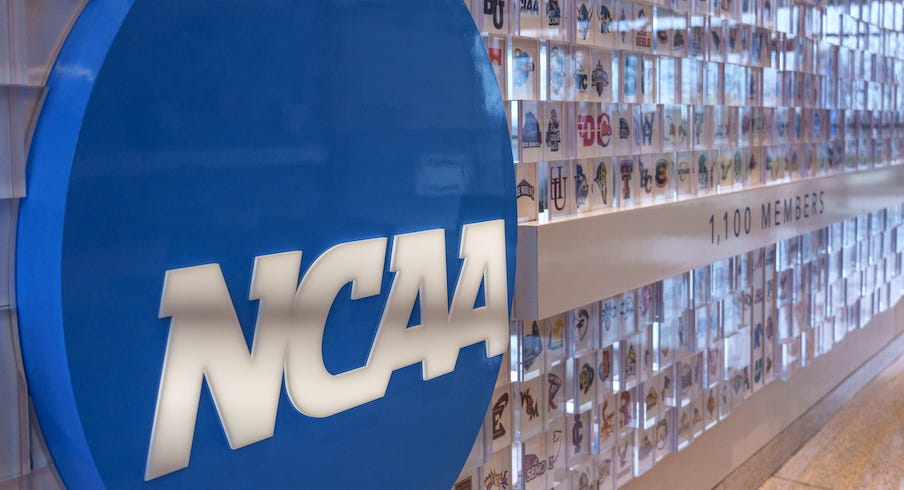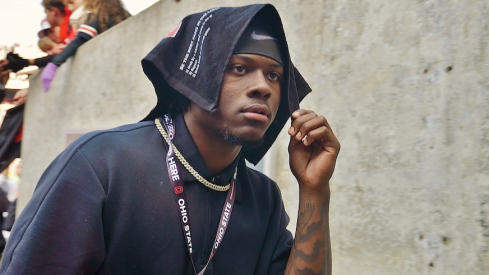The NCAA and the Power Five conferences have officially approved a settlement that will set up a model for colleges to begin paying athletes directly for the first time.
The NCAA’s Board of Governors and each of the five Division I conferences with decision-making autonomy – the Big Ten, SEC, ACC, Big 12 and Pac-12 (whose current members voted with the league even though 10 of them are joining new conferences in July) – all voted this week to approve a settlement that will pay $2.78 billion to former college athletes to resolve a trio of antitrust lawsuits against the NCAA.
In a joint statement released Thursday, NCAA president Charlie Baker and the five conferences’ commissioners described the settlement as “an important step in the continuing reform of college sports that will provide benefits to student-athletes and provide clarity in college athletics across all divisions for years to come.”
NCAA & Autonomy Conferences Statement on House Settlement: https://t.co/LPMRo80zyH pic.twitter.com/FStHhEYmeZ
— NCAA News (@NCAA_PR) May 24, 2024
The NCAA will pay $1.2 million from its reserves while the rest of the settlement will be funded by a reduction in distributions to its Division I members over the next 10 years. In a letter sent to the NCAA membership by Baker on Friday, he informed schools that the FBS conferences would be responsible for covering $950 million of the remaining obligation while the FCS conferences would pay $370 million over the next 10 years and nonfootball conferences would fund $340 million.
Per ESPN’s Pete Thamel and Dan Murphy, all Division I athletes dating back to 2016 are eligible to receive a share of the class-action settlement, but athletes who opt into the settlement cannot sue the NCAA for other potential antitrust violations.
As a part of the settlement, the NCAA has agreed to allow schools to directly share revenue with athletes for the first time. The model created by the settlement, which will go into effect for the 2025-26 academic year, will permit schools – though it won’t require them – to share revenue with athletes up to a cap equivalent to 22% of the average revenue for power conference schools.
Per Yahoo Sports’ Ross Dellenger, the cap is expected to start at approximately $22 million per year, though that figure is “still very much in flux.”
In his letter, Baker outlined four “critical objectives” that he believes the settlement achieves:
- It replaces potentially crippling lawsuits with a negotiated settlement and a 10-year injunction.
- It enables student-athletes to receive up to 22% of the average DI Power 5 athletics revenues — in addition to tuition and other benefits currently provided. Adding all these benefits together, many A5 schools would be devoting nearly 50% of athletics revenue to student-athletes.
- It ends decades of antitrust litigation, stabilizing college sports while permitting conferences and the NCAA to enforce rules that set a level playing field and emphasize the educational mission of college athletics.
- It binds DI together, enabling the NCAA to contribute $120 million annually for 10 years toward back damages.
The settlement still requires approval from a judge and remains available for objections from individual plaintiffs, which means it might not be finalized for several months. The settlement also doesn’t prevent future litigation against the NCAA, which is currently facing a fourth antitrust lawsuit in Colorado; the NCAA’s request to have that case moved to California was denied on Thursday, allowing the suit to proceed forward if its plaintiffs opt out of the settlement.
If the settlement is ultimately finalized, it will set forth a seismic shift for college sports, ending the NCAA’s longstanding ban on schools paying athletes directly. While schools have been working with donor-funded collectives to arrange NIL deals for their athletes for the past three years, the new policy will allow schools to make NIL deals directly with their athletes and pay them with the revenues they help generate.
It remains unclear how Title IX will apply to the new revenue-sharing model and whether schools will need to pay an equal number of female and male athletes. It’s also uncertain whether the new model will be able to effectively crack down on schools continuing to use NIL collectives to circumvent the revenue-sharing cap, though Dellenger reported that the settlement would incentivize schools to bring collectives in-house.
Current Ohio State athletic director Gene Smith, who is retiring at the end of June, is among those who have expressed support for the new revenue-sharing model.
This new model will benefit student-athletes in major ways, this change has to be embraced allowing Buckeye Athletics to continue to be a premier program! https://t.co/sXCKZSGF1G
— Gene Smith (@OSU_AD) May 24, 2024
Smith believes the new model will help rectify the issues with the current model, in which a lack of clear guardrails has allowed schools to skirt NCAA rules by arranging NIL deals for recruits through collectives without facing consequences.
“I think the biggest thing that people need to appreciate about it is the intercollegiate athletic model is going to change. And I’ve always told my teammates, you have to embrace change or be irrelevant,” Smith told WOSU’s All Sides earlier this month. “And so figure out how you’re gonna embrace it. And then be a part of that change.”


